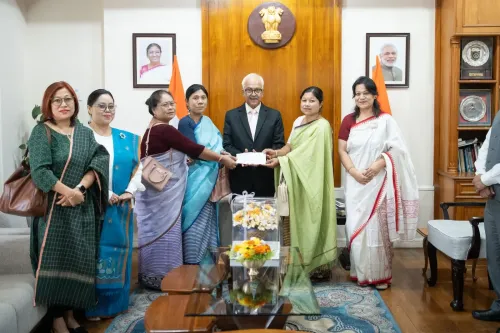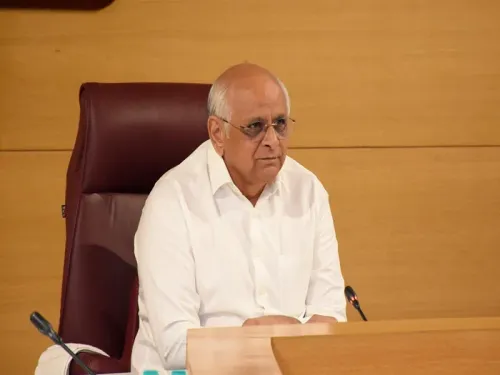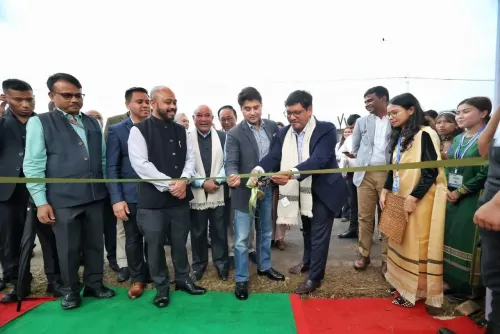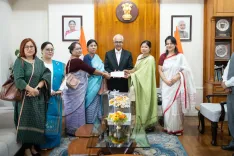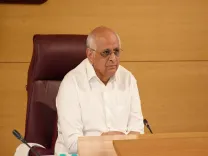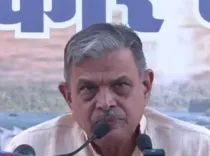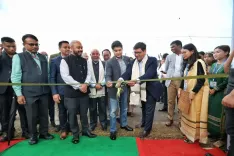How Does Kerala’s Centuries-Old Heritage Reflect India’s Cultural Grandeur?
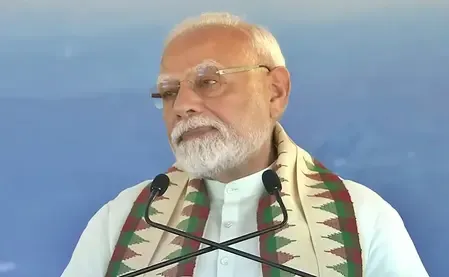
Synopsis
Key Takeaways
- Kerala Piravi marks the formation of Kerala on November 1, 1956.
- The day celebrates Kerala’s rich cultural heritage.
- Traditional attire and events promote the Malayalam language.
- Kerala's unity showcases the diversity of India.
- Public celebrations reflect the state's artistic spirit.
New Delhi, Nov 1 (NationPress) Prime Minister Narendra Modi on Saturday conveyed his sincere wishes to the people of Kerala on the occasion of Kerala Piravi, praising the state’s centuries-old heritage that exemplify India’s vibrant cultural richness.
In a message shared on the social media platform X, PM Modi stated, “Warm wishes on Kerala Piravi! This is a state whose residents have been excelling in various sectors around the globe and have made a name for themselves through their creativity and innovation. The state’s picturesque landscapes and historical heritage mirror India’s vibrant cultural grandeur. May the people of Kerala always be blessed with health and success.”
Union Home Minister Amit Shah also took to social media 'X' to extend his greetings on the state’s formation day. He expressed, “Heartfelt greetings to the people of Kerala on this auspicious Piravi! Kerala stands out as a beacon in our cultural landscape with its timeless traditions, natural beauty, and the creative spirit of its people. I pray for the state’s continued progress and prosperity,” he wrote.
Kerala Piravi, which translates to the “birth of Kerala,” commemorates the formation of the state on November 1, 1956. This day marks the unification of the Malayalam-speaking regions of Travancore, Cochin, and Malabar under the States Reorganisation Act, giving rise to what we now recognize as Kerala. The amalgamation of these regions symbolized not only administrative unification but also the emergence of a shared linguistic and cultural identity.
Before India gained independence, Kerala did not exist as a single entity. Travancore, Cochin, and Malabar were separate regions, each with its own distinct traditions. Travancore and Cochin merged in 1949 to form Travancore–Cochin, and later, in 1956, this region united with Malabar and the Kasaragod taluk of South Canara, resulting in the formation of the state of Kerala.
Kerala Piravi is not just a recognition of geography; it is a celebration of language, literature, and legacy. It honors Kerala’s rich traditions, artistic brilliance, and enduring cultural heritage that continue to inspire generations.
Throughout the state, residents celebrate this day with immense pride and cultural enthusiasm. Women don elegant kasavu sarees, while men wear traditional mundu. Schools and colleges observe Malayala Bhasha Vaaram (Malayalam Language Week) with essay writing, speeches, and cultural events to foster love for the mother tongue.
Public buildings are adorned in festive lights, reflecting the colors of Kerala’s flag, while communities unite to showcase local art, music, dance, and cuisine—celebrating the essence of “God’s Own Country.”

